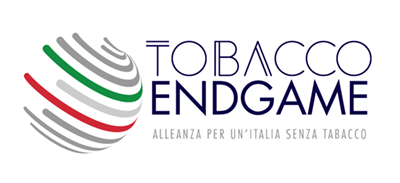|
Rassegna Stampa Scientifica Gennaio 2024
|
Cigarette smoking is causally related to lung cancer in men; the magnitude of the effect of cigarette smoking far outweighs all other factors… [I]t is a health hazard of sufficient importance to warrant appropriate remedial action.” [Luther Terry et al. Smoking and Health: Report of the Advisory Committee to the Surgeon General of the Public Health Service, 1964. US Public Health Service. Office of the Surgeon General]
Ed. Note: This past Thursday, January 11, 2024, marked the 60th anniversary of the release of the first US Surgeon-General Report (SGR) on Smoking and Health. Coupled with the 1962 UK report of the same name, Smoking and Health, by the Royal College of Physicians (RCP), these reports led to major if never rapid-enough progress towards declining rates of tobacco use. To mark the anniversary of that first SGR report, Professor Alan Blum, director of the the University of Alabama Center for the Study of Tobacco and Society, “has published a new online exhibit, “Blowing Smoke: The Lost Legacy of the Surgeon General’s Report on Smoking and Health.”” See also: 60 Years After Landmark Report on Smoking, Rates Have Plummeted but Work Remains, U.S. News & World Report; 60th anniversary of surgeon general's report linking tobacco to cancer, Fox17]
"White House officials are wrestling with one of the most consequential public health decisions of President Biden’s term: whether to enact a nationwide ban on menthol cigarettes, which are a leading cause of death among Black Americans... The years-long debate about banning menthol cigarettes has pitted public health officials who say the move would effectively save hundreds of thousands of Black lives in the coming decades against political advisers who warn that Biden could lose support by banning products popular in the Black community, jeopardizing crucial votes ahead of what is expected to be a close election…
"The administration faces time pressure to make a decision, with public health officials seeking to finalize and publish the regulations by Jan. 20 — 12 months before next year’s Inauguration Day — to lock in industry requirements that require a year to take effect, worried that a new administration could reverse them... Officials also said that the fight over menthols reflects the short-term political calculations that interfere with long-term public health goals, such as reversing stalled progress on U.S. life expectancy." [Dan Diamond, Tyler Pager. White House weighs menthol ban amid dueling health, political pressures, Washington Post]
“Do you know what a Zynbabwe is? Or an upper-decky lip pillow? OK, here’s an easier one — how about just Zyn? If you are scratching your head, don’t feel bad: Almost no adult I have spoken to has had any idea either. This is despite the fact that the nicotine pouch Zyn is a jewel in the crown of a multibillion-dollar tobacco company… Parents need to know that when children go online, they are entering a world of influencers, many of whom are hoping to make money by pushing dangerous products. It’s a world that’s invisible to us, because when we log on to our social media, we don’t see what they see…
“Another thing to know about Zyn? The tobacco conglomerate Philip Morris International acquired the Zyn maker Swedish Match in 2022 as part of a strategic push into smokeless products, a category it projects could help drive an expected $2 billion in U.S. revenue in 2024. P.M.I. is also a company that has long denied it markets tobacco products to minors despite decades of research accusing it of just that. One 2022 study alone found its brands advertising near schools and playgrounds around the globe…
“California forbids any tobacco billboards near the middle school by my house in San Francisco, but that law does not prevent unsponsored #Zynbabwe videos from showing up in those students’ feeds at recess… Laws should require tech companies to share data on what young people are seeing on social media and to prevent any content promoting age-gated products from reaching children’s feeds… Let’s stop treating the internet like a monster we can’t control. We built it. We foisted it upon our children. We had better try to protect them from its potential harms as best we can.” [Emily Dreyfuss. Our Kids Are Living in a Different Digital World, New York Times]
“As students at the University of Sydney prepared for their end-of-year exams in late 2023, a trio in brightly coloured jumpsuits pulled up to the campus in a van, armed with tiny bottles labelled “Ryde wellbeing shots”… What was not revealed to students, and is not on the Ryde product label, is that the Water Street Collective is a wholly owned subsidiary of British American Tobacco. The Ryde website only once mentions British American Tobacco, and only as BAT.”… Christina Watts, a tobacco control researcher with the Daffodil Centre (a joint venture of Cancer Council NSW and the University of Sydney), said… “On first glance it’s tempting to think the industry is moving away from deadly and addictive products. But these startup wellness brands and products do not replace tobacco profits, but serve only to expand revenue sources. These products are a thin veneer on what remains a deadly industry.” [Melissa Davey, Natasha May. Australian students handed ‘wellbeing shots’ made by subsidiary of British American Tobacco – as experts fear new front in health wars, The Guardian]
“Vapes should be made prescription only to protect children, leading respiratory doctors have said. In a letter published in The Times [Saturday January 6], 17 practising and retired paediatric specialists call on ministers to take action to curb youth vaping. Rising numbers of children and young people are being treated in NHS hospitals for vaping-related disorders. Vaping rates among teenagers have risen sharply, particularly since disposable vapes came onto the market.” [Kat Lay. Doctors call for prescription-only vapes to protect children, The Times. See also: Vaping is ridiculous and unmanly – yet I still got hooked, The Telegraph]
“We have spent our working lives caring for children and young people with respiratory illnesses and have seen at first hand the problems that smoking and the subsequent addiction to nicotine have caused. The known long-term immorality of the tobacco and the vaping industries and the suggestion by the World Health Organisation that Britain is out of step with the rest of the world impel us to urge the government to stop further consultations and rapidly implement three things: first, rigorous enforcement of the ban on vapes and snus sales to children and young people under 18, with punitive measures for non-compliance; second, ban the sale of snus and vapes to adults except when prescribed for smoking cessation, as, in our experience, wider availability enables them to fall into children’s hands; and third, a total ban on disposable vapes.” [Letter. Professor Warren Lenney et al., Former chairs and previous members of the British Paediatric Respiratory Society executive committee. Call to ban vaping, The Times]
“The National Health Interview Survey (NHIS) data from 2014 to 2021 was used to evaluate the relationship between e-cigarette use and myocardial infarction in subjects who have never smoked cigarettes… The current e-cigarette users had a 2.6-fold increase in the odds of having a myocardial infarction (OR 2.62, 95% CI 1.44-4.77; p <0.01) after adjusting for sex, age, hypertension, diabetes, hypercholesterolemia, and obesity/overweight. Conclusions: This study suggests that current e-cigarette use increases the risks of cardiovascular disease, including myocardial infarction and stroke, in subjects who never smoked cigarettes.”
Electronic Cigarette Use and Myocardial Infarction
Cureus. 2023 Nov 6;15(11):e48402. eCollection 2023 Nov.
Talal Alzahrani
https://www.ncbi.nlm.nih.gov/pmc/articles/PMC10700683/
https://www.ncbi.nlm.nih.gov/pmc/articles/PMC10700683/pdf/cureus-0015-00000048402.pdf
Note: Open Access.
“There is high‐certainty evidence that ECs [e-cigarettes] with nicotine increase quit rates compared to NRT [nicotine replacement therapy] and moderate‐certainty evidence that they increase quit rates compared to ECs without nicotine. Evidence comparing nicotine EC with usual care/no treatment also suggests benefit, but is less certain due to risk of bias inherent in the study design. Confidence intervals were for the most part wide for data on Aes [adverse events], SAEs [serious adverse events] and other safety markers, with no difference in AEs between nicotine and non‐nicotine ECs nor between nicotine ECs and NRT. Overall incidence of SAEs was low across all study arms. We did not detect evidence of serious harm from nicotine EC, but the longest follow‐up was two years and the number of studies was small. The main limitation of the evidence base remains imprecision due to the small number of RCTs [randomised controlled trials], often with low event rates.”
Electronic cigarettes for smoking cessation
Cochrane Database of Systematic Reviews
Version published: 08 January 2024
Nicola Lindson, Ailsa R Butler, Hayden McRobbie, Chris Bullen, Peter Hajek, Rachna Begh, Annika Theodoulou, Caitlin Notley, Nancy A Rigotti, Tari Turner, Jonathan Livingstone-Banks, Tom Morris, Jamie Hartmann-Boyce
https://www.cochranelibrary.com/cdsr/doi/10.1002/14651858.CD010216.pub8/full
“This was a longitudinal study using data from a nationally representative sample of youth (age 12–17 years) in the Population Assessment of Tobacco and Health Study… After matching, household vaping bans were associated with 56% lower odds of youth vaping (OR = 0.44; 95% CI = 0.33–0.58). Results from hybrid panel models also revealed 37% lower odds of vaping in waves when youth lived in a vape-free household compared to waves when they did not (OR = 0.63; 95% CI = 0.50–0.78)… Conclusions: Household vaping bans appear to be associated with lower odds of past-month vaping among US adolescents, compared with similar youth whose households did not have a ban and to themselves in waves when their households did not have a ban.”
Household vaping bans and youth e-cigarette use
Addiction . 2024 Jan;119(1):74-83. Epub 2023 Sep 15.
Jeremy Staff, Jessica M Mongilio, Jennifer L Maggs, Mike Vuolo, Brian C Kelly
https://onlinelibrary.wiley.com/doi/10.1111/add.16335
“All cigarette use—assessed as ever, occasional, frequent, or daily—among adolescents declined markedly from 1991 to 2021. Specifically, ever use significantly decreased from 70.1% in 1991 to 17.8% in 2021 (P<0.05), an almost 4-fold decline. Occasional use significantly decreased from 27.5% in 1991 to 3.8% in 2021 (P<0.05), a greater than 7-fold decline. Frequent use significantly decreased from 12.7% to 0.7%, a greater than 18-fold decline. Daily use declined from 9.8% in 1991 to 0.6% in 2021, a greater than 16-fold decline… Conclusion: These data show large and significant decreases in cigarette use among US adolescents in high school grades 9 through 12 from 1991 to 2021. Nonetheless, the data also suggest residual clinical and public health challenges that will require targeted interventions.”
Trends in Cigarette Smoking Among United States Adolescents
Ochsner Journal December 2023, 23 (4) 289-295.
Maria C. Mejia, Adedamola Adele, Robert S. Levine, Charles H. Hennekens and Panagiota Kitsantas
https://www.ochsnerjournal.org/content/23/4/289
Note: Open Access.
Related PR:
Dramatic decline in cigarette use among U.S. teens over three decades
https://www.eurekalert.org/news-releases/1030776
“In 2019, the deaths and DALYs [disability adjusted life years] attributed to tobacco-related breast cancer were estimated to be 35,439 (95% UI: 22,179–48,119) and 1,060,590 (95% UI: 622,550–1,462,580), respectively. These figures accounted for 5.1% and 5.2% of the total burden of breast cancer. ASMR [age-standardized mortality rate] and ASDR [age-standardized DALYs rate] increased in low SDI [socio-demographic index] regions, remained stable in low-middle and middle SDI regions and declined in high and high-middle SDI regions… In conclusion, tobacco is one important and modifiable risk factor for breast cancer... In addition, the populations in Low SDI regions would suffer a substantial burden of tobacco-related breast cancer, leading to a persistent challenge to both healthcare and economic sectors in the foreseeable future.”
The global, regional, and national disease burden of breast cancer attributable to tobacco from 1990 to 2019: a global burden of disease study
BMC Public Health volume 24, Article number: 107 (2024)
Published: 06 January 2024
Qiusheng Guo,Yunyan Lu,Weiguo Liu,Gaochen Lan & Tian Lan
https://bmcpublichealth.biomedcentral.com/articles/10.1186/s12889-023-17405-w
Note: Open Access.























